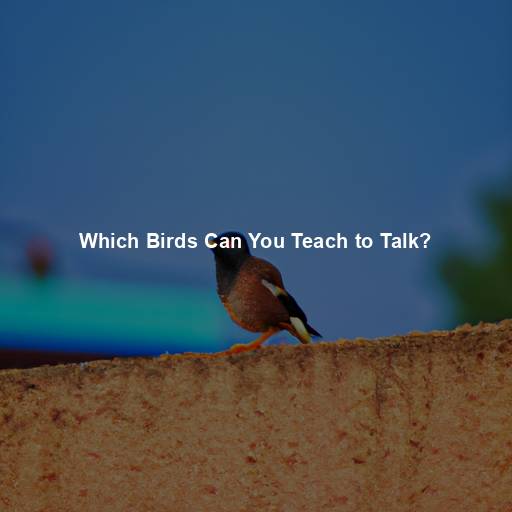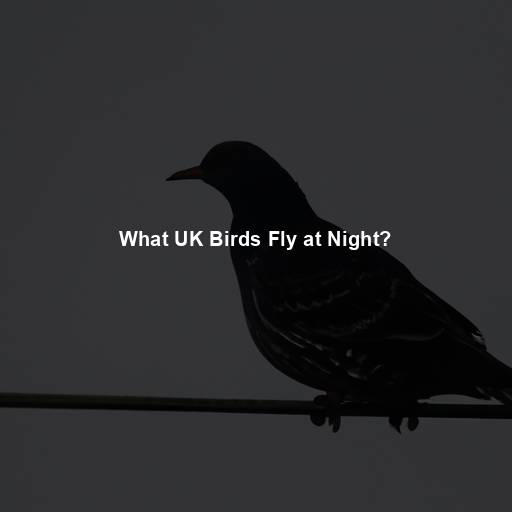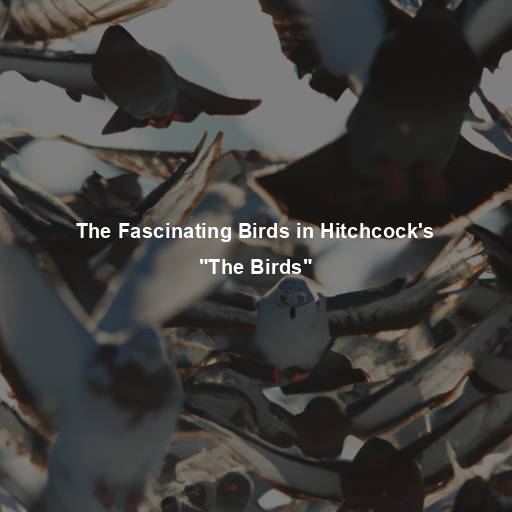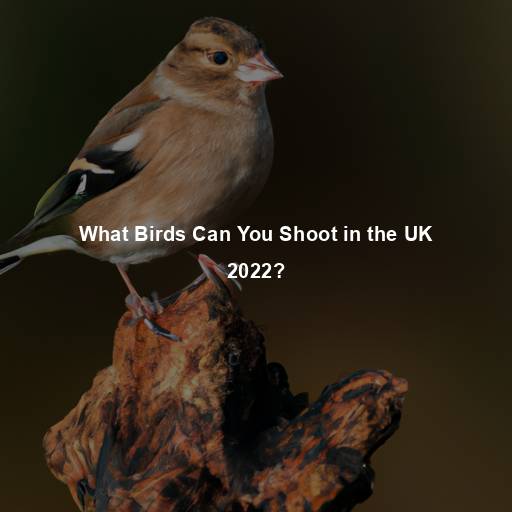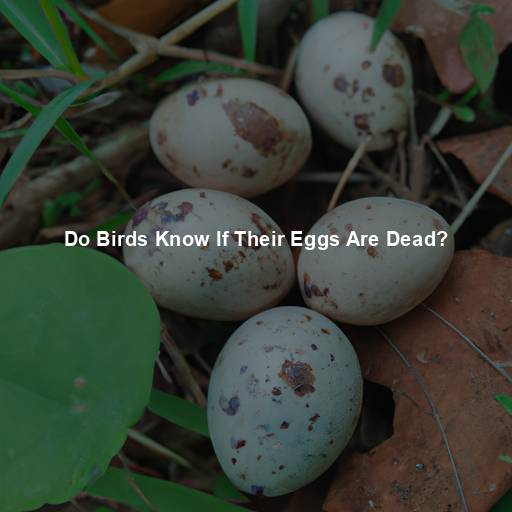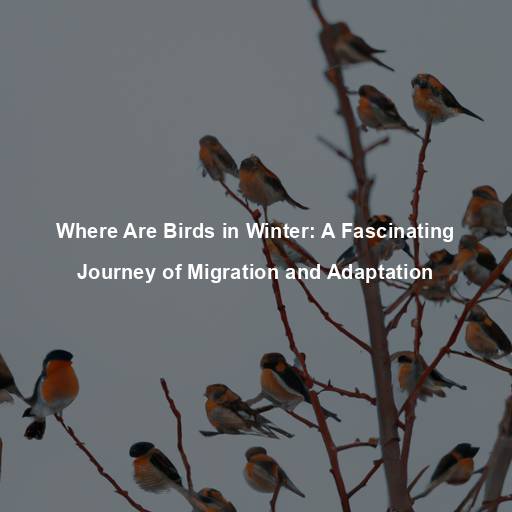Which Birds Can You Teach to Talk?
Last Updated on July 28, 2023 by Evan
Contents
- 1 Unlocking the Fascinating World of Talking Birds
- 1.1 The Art of Avian Communication
- 1.2 The Remarkable Mimics: Parrots
- 1.3 The Charming Cockatiels
- 1.4 The Singing Sensations: Mynah Birds
- 1.5 The Quirky Quakers: Monk Parakeets
- 1.6 The Lesser-Known Talkers
- 1.7 The Key to Unlocking a Bird’s Talking Potential
- 1.8 The Melodious Symphony of Feathered Speech
- 1.9 A Window into Avian Intelligence
- 1.10 Exploring the Brain of a Talking Bird
- 1.11 Nature vs. Nurture: The Role of Environment
- 1.12 Social Interaction: The Key to a Talking Bird
- 1.13 The Importance of Positive Reinforcement
- 1.14 Beyond Words: Understanding Bird Vocalizations
- 1.15 Ethical Considerations: Responsible Ownership
- 1.16 The Magic of Feathered Conversation
- 1.17 Unraveling the Secrets of Birdsong
- 1.18 The Brain Behind the Music
- 1.19 Factors Influencing a Bird’s Talking Ability
- 1.20 Nurturing a Talking Bird
- 1.21 Beyond Speech: The Beauty of Avian Vocalizations
- 1.22 The Wonder of Talking Birds
- 2 FAQs: Which Birds Can You Teach to Talk
Unlocking the Fascinating World of Talking Birds
Have you ever pondered the possibility of birds engaging in conversation? The notion of having a feathered companion who can communicate with you in human language is undeniably fascinating. Although it is important to note that not all bird species possess the uncanny ability to mimic our speech, there are select avian friends who possess this extraordinary talent. Join us as we delve into the enchanting realm of talking birds and uncover the species that have the potential to be your charismatic conversational partners.
The Art of Avian Communication
As we embark on a fascinating exploration of avian communication, we must first unravel the intricate web of bird talk. Just like humans, our feathered friends have mastered the art of vocalizing thoughts and feelings. But let’s not underestimate them, for their vocal repertoire goes beyond mere chirps and tweets, encompassing a remarkable variety of melodic songs and elaborate calls. Brace yourself for a captivating journey into the diverse and enigmatic world of avian communication.
The Remarkable Mimics: Parrots
When it comes to talking birds, the first family that springs to mind is undoubtedly the parrot family. Known for their exceptional ability to mimic various sounds, parrots have become synonymous with talking birds. Among the members of this family, the African Grey Parrot (Psittacus erithacus) stands out as one of the most skilled talkers. These intelligent creatures have been known to develop an extensive vocabulary, often reaching hundreds of words.
The Charming Cockatiels
Cockatiels, those enchanting creatures known by their scientific name Nymphicus hollandicus, have successfully captured the imaginations of bird enthusiasts far and wide, with their endearing personalities and unparalleled talent for mimicking sounds, including the intricate nuances of human speech. Though their repertoire of words may be dwarfed by the linguistic prowess of African Grey Parrots, these delicate and charming parrots have been known to pick up a smattering of words and phrases, turning them into delightful and captivating companions. They embody a unique blend of gentle giants and loquacious mimicry, leaving one wonderstruck and astounded by their feathered brilliance.
The Singing Sensations: Mynah Birds
Move aside parrots and cockatiels, there’s a bird in town that’s ready to steal the show – the Mynah bird! Hailing from Asia and parts of Africa, these feathered wonders have an uncanny knack for imitating all sorts of sounds, especially human speech. With their one-of-a-kind vocal abilities, Mynah birds can mimic words and phrases in a way that will leave you perplexed and amazed. From their melodic calls to their captivating mimicry, these delightful creatures are sure to add a burst of charm to any home.
The Quirky Quakers: Monk Parakeets
Hailing from the vibrant landscapes of South America, a flock of charismatic creatures has made quite the name for themselves in the realm of animal companions. The captivating Monk Parakeets, also known as Myiopsitta monachus, have taken the avian enthusiast community by storm, captivating hearts with their charming ability to engage in vocal interactions. While their linguistic repertoire may not rival that of the renowned parrots or cockatiels, these gregarious birds possess a distinct allure in their speech. Their whimsical nature is well-documented, as they frolic in their social circles, and their knack for imitating words and sounds adds an enigmatic layer of amusement to their already captivating persona.
The Lesser-Known Talkers
When it comes to chatty birds, parrots like parrots, cockatiels, mynah birds, and Monk Parakeets are the talk of the avian town. But hold on to your feathers, because there are a few other bird species that may just ruffle your feathers with their surprising ability to imitate human speech. Take the budgerigars, affectionately known as budgies for example. These pint-sized parrots may have a limited repertoire, but they can still weave a few words and phrases into their tiny conversations.
The Key to Unlocking a Bird’s Talking Potential
Now that we have explored some of the bird species that can talk, it’s essential to understand that not all individuals within these species will possess the same level of talking ability. Just like humans, each bird has its own unique personality and aptitude for learning. To encourage your feathered friend to talk, it is crucial to provide a nurturing environment enriched with social interaction, positive reinforcement, and plenty of mental stimulation. Spending quality time with your bird, engaging in conversation, and using repetition can greatly enhance their language-learning capabilities.
The Melodious Symphony of Feathered Speech
Having a chatty feathered companion can truly be a captivating journey, brimming with delightful surprises and heartwarming moments. Delving into the world of avian communication unveils a symphony of sounds that goes beyond mere talking. Our avian friends weave intricate tapestries of meaning through their enchanting songs, captivating calls, and captivatingly unique vocalizations, painting a vibrant mosaic of expression that leaves us in awe. So, as we embrace the extraordinary beauty of our feathered friends, let us revel in the diverse ways they communicate, transcending words and captivating our hearts in their own bewitching language.
As we conclude our exploration of the world of talking birds, it is evident that certain bird species possess an extraordinary talent for mimicking human speech. From the remarkable mimics like African Grey Parrots to the charming cockatiels, the avian world offers a delightful array of feathered talkers. So, if you are considering adding a talking bird to your family, remember to do your research, choose a suitable species, and provide the love and care necessary to unlock their linguistic potential. May your home be filled with the sweet melodies of your chatty companions!
A Window into Avian Intelligence
The enchanting phenomenon of birds imitating human speech never ceases to captivate the minds of scientists and bird admirers alike. These clever creatures exhibit a compelling display of intelligence and versatility, leaving us in awe of their remarkable abilities. Although the intricacies of their language acquisition still perplex researchers, one thing is certain: birds possess an extraordinary knack for vocal learning and replication that sets them apart in the animal kingdom.
Exploring the Brain of a Talking Bird
As scientists delve further into the enigmatic depths of avian communication, they find themselves captivated by the intricate workings of the avian brain. Within this complex landscape, one particular phenomenon has captured their attention – the vocal learning pathway. This network of brain regions, involved in the creation and interpretation of sounds, bears a remarkable resemblance to the intricate system responsible for language processing in humans. By venturing into this mysterious realm of bird cognition, researchers aspire to unravel the secrets behind the evolution of human speech and language.
Nature vs. Nurture: The Role of Environment
While some bird species, such as the African Grey Parrot, are renowned for their exceptional linguistic abilities, it is important to note that not all individuals within a species will possess the same aptitude for speech. Nature and nurture both play crucial roles in determining a bird’s talking potential. Genetic factors may influence a bird’s predisposition for vocal learning, while environmental factors, such as social interaction and exposure to human speech, can greatly enhance their ability to mimic sounds.
Social Interaction: The Key to a Talking Bird
Birds have an undeniable knack for sociability, and their charm lies in their remarkable ability to imitate speech. Surprisingly, their aptitude for language acquisition is deeply intertwined with their interactions with humans and other winged companions. Nurturing this innate talent requires consistent engagement and the power of positive reinforcement, as it ignites a bird’s language proficiency. Whether it’s through creating a captivating habitat or fostering meaningful social encounters, facilitating the perfect breeding ground for verbal prowess is as perplexing as it is rewarding.
The Importance of Positive Reinforcement
Teaching a bird to talk can be quite the feathered adventure! By using positive reinforcement techniques, such as giving treats, praise, or attention whenever your feathered friend produces a desired sound or word, you can keep them chirping with joy. Patience and consistency are key in this pursuit, as each bird has their own unique pace of learning. By creating a nurturing environment, you can unlock the full potential of your talking bird’s language skills and deepen your bond with them in the process.
Beyond Words: Understanding Bird Vocalizations
While the ability to mimic human speech is undoubtedly captivating, it is crucial to recognize that birds communicate through a diverse range of vocalizations. Each species has its own unique repertoire of calls, songs, and sounds, which serve various purposes such as territorial defense, courtship displays, or warning signals. Understanding and appreciating these natural vocalizations adds depth to our understanding of avian communication and allows us to connect with birds on a deeper level.
Ethical Considerations: Responsible Ownership
Bringing a feathered companion into your life is no ordinary feat – it’s a journey that demands an undeniable dedication and sense of responsibility. These captivating creatures, known as birds, possess an astonishing level of intelligence – their minds crave stimulation, their hearts crave companionship, and their wings crave exhilarating flights. To provide them with a fulfilling existence, you will need to create an expansive and captivating habitat, serve them a diet worthy of their discerning tastes, and shower them with proper medical care. Above all, remember to embark on this quest ethically, ensuring that your precious avian friend is sourced from reputable breeders or compassionate rescues.
The Magic of Feathered Conversation
The enchantment of conversing with a feathered creature blessed with the gift of imitating human language is both captivating and baffling. It bestows upon us an unprecedented realm overflowing with endless possibilities, where genuine connection and camaraderie find their home. From exchanging heartfelt dialogues to reveling in shared fits of uncontrollable mirth, the relationship blossoming between a loquacious bird and its human counterpart is nothing short of extraordinary and unparalleled.
As we conclude our exploration of which birds can be taught to talk, we hope this article has shed light on the fascinating world of avian language. From the remarkable mimics like parrots and cockatiels to the lesser-known talkers like mynah birds and Monk Parakeets, the bird kingdom offers a symphony of vocal talents waiting to be discovered. So, whether you choose to embark on this linguistic adventure or simply appreciate the natural vocalizations of our feathered friends, may the language of birds continue to inspire and captivate us for generations to come. ## The Fascinating World of Avian Speech
Unraveling the Secrets of Birdsong
Throughout history, the melodic symphony of birdsong has bewitched and mystified us, leaving us perplexed about its origins and secrets. Behind these captivating sounds lies a hidden world of avian linguistics, where certain bird species defy convention and skillfully mimic human speech. Join us on a journey into the intricate mechanisms and enigmatic factors that empower birds to possess such linguistic wizardry. Prepare to be amazed as we unravel the mysteries of their charming melodies.
The Complexity of Birdsong
The enchanting symphony of birdsong captivates our senses, weaving a tapestry of communication as intricate as the ripples in a pond. It is a language of the feathered kind, defying simplicity with its myriad of purposes. Whether it be the territorial anthem announcing dominance or the seductive serenade wooing a potential mate, each melodious note carries a story untold. And yet, amidst this cacophony of avian choruses, the individuality within species emerges – an enigmatic kaleidoscope of unique patterns, rhythm, and intonation.
Vocal Learning: A Rare Talent
Vocal learning is the ability to acquire and imitate sounds through auditory feedback. Humans are not the only creatures capable of vocal learning—some birds, bats, dolphins, and whales also possess this remarkable talent. Among birds, vocal learning is relatively rare and is observed in select species, such as parrots, songbirds, and hummingbirds.
The Brain Behind the Music
The Avian Brain: A Surprising Similarity
It’s astonishing how researchers are delving into the depths of the avian brain to unravel the enigma of birds’ acquisition and production of speech-like sounds. In a twist that leaves us utterly perplexed, these intrepid explorers have stumbled upon a mind-boggling revelation: certain regions responsible for birds’ vocal learning bear an uncanny resemblance to human brain areas engaged in language processing. This mind-blowing discovery points to a potential evolutionary link, hinting that the intricate neural mechanisms behind the charm of speech and birdsong might have sprouted from ancient roots stretching back countless millennia.
The Role of the Songbird’s Brain
The enchanting songbird has intrigued scientists for years, captivating their attention with its unparalleled vocal prowess. This feathered wonder has unraveled the mysteries of avian speech, shedding light on the intricate workings of the avian brain. Meticulous research has uncovered the existence of specialized brain regions, known as the song control nuclei, which hold the key to understanding the birds’ melodious repertoire. These fascinating regions undergo a mesmerizing transformation during the song learning process, empowering young birds to master the unique sounds that define their species.
Factors Influencing a Bird’s Talking Ability
While certain bird species are known for their exceptional talking abilities, individual birds within those species may vary in their proficiency. Several factors can influence a bird’s aptitude for mimicry and speech. Let’s explore some of these factors in more detail.
Genetic Predisposition
Birds have always captivated us with their ability to mimic human speech, leaving us in awe of their talent. But have you ever wondered why some birds excel in this skill while others fall short? It turns out that genetics may hold some of the answers. Researchers have discovered that certain species, like the African Grey Parrot, may have a genetic predisposition for vocal learning.
Early Exposure to Sounds
It’s fascinating to explore the intricate relationship between a bird’s language development and their early exposure to sounds. Research suggests that during the critical period of vocal learning, this exposure plays a crucial role in shaping their linguistic abilities. Birds that have the fortune of being exposed to human speech or other sounds they are expected to mimic at a young age are more likely to successfully acquire and reproduce those sounds. This process is believed to create and strengthen the neural connections required for their vocal learning journey.
Social Interaction and Imitation
Birds, like humans, gain the gift of gab through their interactions with others. Whether it’s their feathered friends or us chatty humans, the more opportunities they have to engage in social banter, the better their chance of picking up on our linguistic quirks. Just like a bird building its nest, positive reinforcement and words of encouragement act as the powerful foundation for their linguistic aspirations, encouraging them to spread their wings and soar with their language skills. So, next time you’re chatting away with your avian companions, remember that you’re not just having a conversation – you’re unlocking a world of vocal possibilities for them.
Nurturing a Talking Bird
Thinking about adding a vocal winged companion to your abode? The secret lies in constructing an ambiance that encourages their linguistic prowess. Take heed of these invaluable pointers to foster the melodic chatter of your feathered friend:
Establish a Bond of Trust
Building a strong bond of trust with your bird is crucial. Spend quality time together, engaging in activities such as training sessions, playtime, and gentle interactions. This bond will create a foundation of mutual respect and understanding, fostering a positive learning environment.
Provide Mental Stimulation
Just like humans, birds thrive on mental stimulation. Offer your feathered friend a variety of toys, puzzles, and activities that promote cognitive engagement. These mental challenges help keep their minds sharp and encourage their language development.
Encourage Vocalization
Encourage your bird to vocalize by engaging in conversations with them. Talk to your bird using clear and repetitive phrases, allowing them to observe and imitate your speech. Reinforce their efforts with positive reinforcement, such as treats or praise, to reinforce their desired vocalizations.
Be Patient and Consistent
Teaching our feathered friends how to talk is a fascinating journey, filled with twists and turns. Like the flight of a bird, learning to talk is a process that cannot be hurried or coerced. It requires a delicate balance of patience and persistence, as these intelligent creatures learn at their own unique pace. Through consistent and dedicated interactions, we can gently guide them towards expressing their thoughts and mirroring our words.
Beyond Speech: The Beauty of Avian Vocalizations
As we marvel at the captivating allure of talking birds, it becomes crucial to delve deeper and embrace the vast spectrum of bird calls. With a symphony of sounds at their disposal, these feathered beings engage in a captivating form of communication that holds significance within their intricate social structures and ecological landscapes. From the enchanting melodies of songbirds to the rhythmic cadence of woodpeckers, each vocalization weaves a tale that unravels the mysteries and complexity of the natural world, leaving us bewildered and thoroughly fascinated.
The Wonder of Talking Birds
As our exploration of avian speech comes to a close, we find ourselves in a state of awe, marveling at the extraordinary abilities possessed by these feathered creatures. The intricate connections between their brains and ours, coupled with a multitude of intriguing factors that influence their language capabilities, never cease to bewilder us. Whether one chooses to embark on the rewarding journey of nurturing a talking bird or simply revel in the captivating melodies of their innate vocalizations, the realm of avian speech presents a boundless expanse of astonishment and revelation. Let us be forever inspired by the melodic choruses of talking birds and the symphony of their natural vocal expressions, as they continue to elevate our spirits and ignite our sense of wonder for generations to come.
FAQs: Which Birds Can You Teach to Talk
Can all birds be taught to talk?
Birds have always fascinated us with their diverse abilities, but not all of them possess the captivating talent of mimicking and learning human speech. Among the avian world, parrots have stolen the spotlight as the most talkative creatures, especially those charming African Grey parrots. However, they aren’t the only ones capable of engaging in linguistic mimicry; other notable species such as Amazon parrots, budgerigars (lovingly referred to as parakeets), cockatoos, and macaws have also amazed us with their uncanny ability to imitate our vocal patterns. It seems that these feathered marvels have a natural knack for adopting our linguistic repertoire, leaving us in awe and pondering the depths of nature’s perplexing wonders.
How do birds learn to talk?
Imagine the wonder of a bird’s ability to speak, to weave enchanting melodies with their delicate vocal organs called the syrinx. In a captivating dance of mimicry, these feathered marvels embark on a journey of learning, set ablaze by the power of repetition. Patient owners serve as the guides, tirelessly teaching their avian companions new words and phrases, sowing the seeds of communication with unwavering dedication. Through this intricate process of vocal learning, the enchanting symphony of a bird’s song becomes imbued with the perplexing magic of human speech.
Can I teach my pet bird to talk?
Certainly, the prospect of teaching a pet bird the fine art of speech seems within grasp. Yet, one must not fall into the trap of assuming that all avian creatures possess a uniform propensity for imitating human vocalizations. Alas, the truth reveals a tapestry of varying proclivities and dispositions amongst our feathered companions. It is not unusual to encounter a bird of exceptional receptiveness and innate flair for linguistic mimicry, contrasted by others who display an indifferent air towards engaging in such vocal endeavors. In addition, the age at which one embarks upon the training voyage can unveil itself as a pivotal factor in determining success. The fledgling minds of youthful birds emerge as more malleable and thus present a greater likelihood of triumph in mastering verbal communication, in comparison to their more seasoned counterparts.
How long does it take for a bird to learn to talk?
When it comes to birds learning to talk, the journey is as varied as the patterns on their feathers. There’s no telling how long these winged creatures will take to unlock the secrets of speech. It all depends on their unique blend of smarts, quirks, and the dedication poured into training. Some may chirp out mimicry in a matter of weeks, while others engage in a marathon of verbal evolution, taking months or even years to string together coherent phrases. To crack the code, one must maintain a tapestry of consistency, positive reinforcement, and an environment that buzzes with intellectual stimulation.
Can birds understand the meaning of the words they say?
It’s a fascinating world out there when it comes to birds that mimic human speech. Believe it or not, they’re not exactly linguistic geniuses. They simply mimic the sounds they hear, without truly comprehending the meaning behind the words. So don’t expect them to engage in an enlightening conversation anytime soon. However, these clever creatures do form connections between certain phrases and actions, turning their mimicry into a whimsical display of their past experiences. So, next time you hear a bird spouting gibberish, remember that it’s their way of expressing their burst of curiosity and perplexity.
Are there any risks or downsides to teaching a bird to talk?
Teaching our feathered friends the art of chatter surely spices up their lives, bringing them new horizons to explore. Yet, we must tread with caution and delicacy, ensuring that this journey remains harmonious for our little avian companions. While some birds may embrace their newfound linguistic prowess with gusto, others might find their voices a touch too exuberant for their surroundings. Therefore, it is vital to strike a balance, prioritizing their holistic well-being – nurturing their physical and mental health, fostering social connections, and kindling the flames of their imagination, rather than fixating solely on their ability to mimic our human musings.

